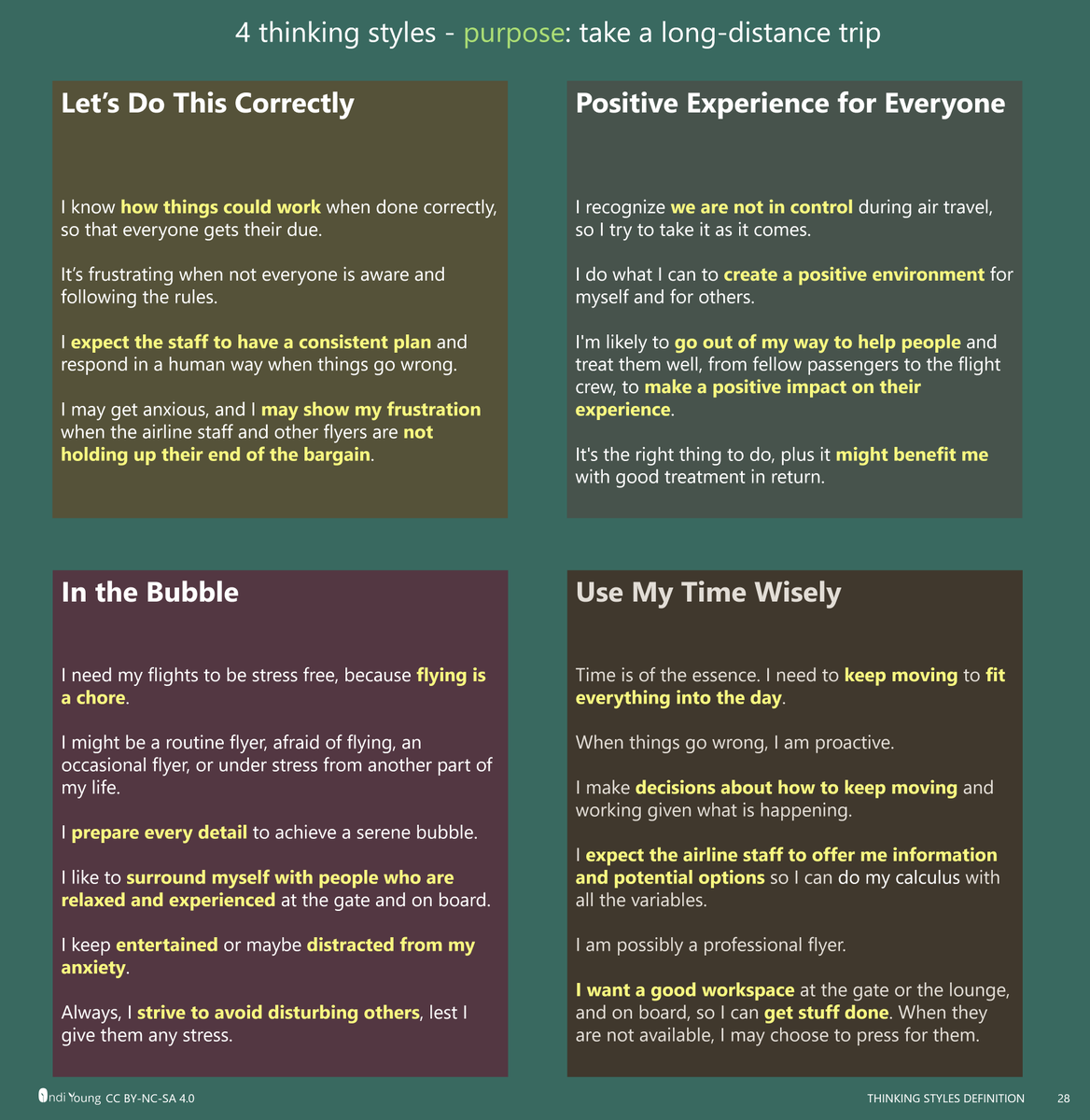In an essay I wrote, "only unaware practitioners use made-up #personas in their design work".
I think I know why this is done.
🧵 1/15
I think I know why this is done.
🧵 1/15

There is a difference between #characters and #archetypes. You can make up characters, as long as each character is based on a researched archetype.
2/15
2/15
People who make up personas are actually making up characters, but they make these characters without any grounding. There are usually no researched archetypes.
You can do better, and have fun:
3/15
You can do better, and have fun:
3/15
📺
Think of it like a TV show.
You have your regular cast of characters in this TV show. Each character on the TV show represents a researched archetype.
4/15
Think of it like a TV show.
You have your regular cast of characters in this TV show. Each character on the TV show represents a researched archetype.
4/15
The characters you make are in scenes together and have different #approaches to the overarching #purpose of the scene, strictly based on the archetypes they represent.
5/15
5/15
These researched archetypes have inner thinking, emotional reactions, and personal rules that came from patterns in #QualitativeData synthesis. (This is what I help teams learn 😉)
6/15
6/15
Your TV show needs lots of episodes, so that it covers real life in ways that help your organization support a broader variety of #people.
Each episode (scenario) in your TV show is about these characters addressing their own purpose, which your solution may support.
7/15
Each episode (scenario) in your TV show is about these characters addressing their own purpose, which your solution may support.
7/15
These are not episodes about characters simply using your solution.
There's the story lead-in: the situation before the characters start addressing the purpose.
There's the interaction between characters as they debate from their own archetype's #perspective.
8/15
There's the story lead-in: the situation before the characters start addressing the purpose.
There's the interaction between characters as they debate from their own archetype's #perspective.
8/15
Show how these characters address the purpose in the context, following the rules from the archetypes they represent. See this article I wrote about #purpose: medium.com/inclusive-soft…
9/15
9/15
It's really cool to have 2 or 3 characters represent one archetype with varied #demographics. This helps spread #awareness that everyone of a certain demographic does not think the same.
10/15
10/15
For example, as they address the same #purpose:
👉 Characters who are urban or rural having the same emotional reactions
👉 Someone who's an immigrant or a local following the same personal rules
👉 A set of people of different races sharing the same inner thinking
11/15
👉 Characters who are urban or rural having the same emotional reactions
👉 Someone who's an immigrant or a local following the same personal rules
👉 A set of people of different races sharing the same inner thinking
11/15
Most of the made-up personas I see all represent the same archetype with different demographics, but the team THINKS that the varied demographics actually represent different archetypes.
12/15
12/15
They have fallen prey to demographic #assumptions. E.g. "young people are experts at digital apps", "old people move slowly", or "Spanish-speakers are immigrants". See this other article I also wrote: medium.com/inclusive-soft…
13/15
13/15
The first image in this thread shows four #archetypes from a listening deeply #study of 100 people addressing the purpose of "take a long distance trip". Most of the people were using air travel as a way to address this purpose.
14/15
14/15
By the way, I call these archetypes #ThinkingStyles. There's a historic reason for the name that I reveal in my Thinking Styles course.
#UXresearch #DesignResearch #UXdesign #ux
15/15
#UXresearch #DesignResearch #UXdesign #ux
15/15
• • •
Missing some Tweet in this thread? You can try to
force a refresh

 Read on Twitter
Read on Twitter




